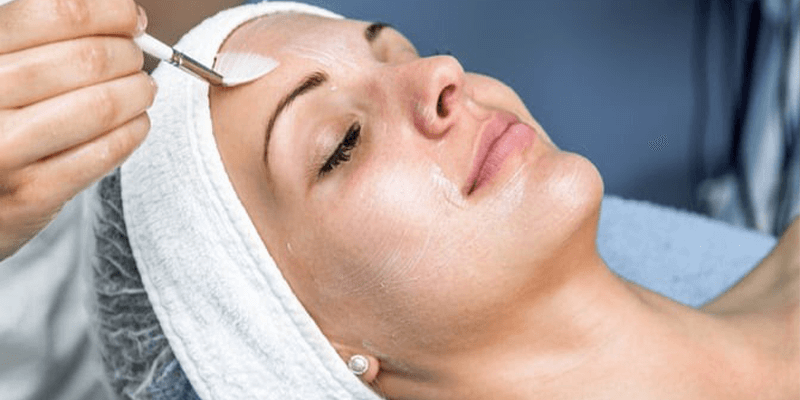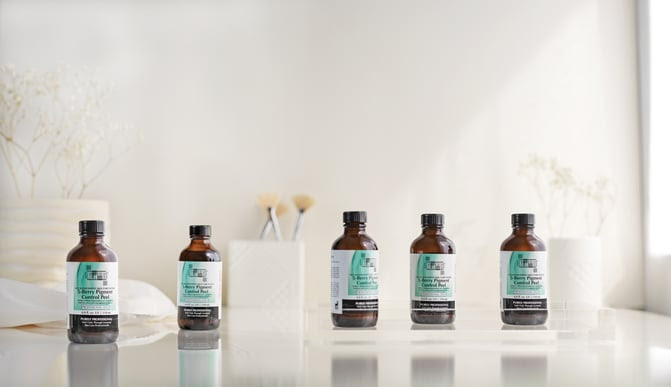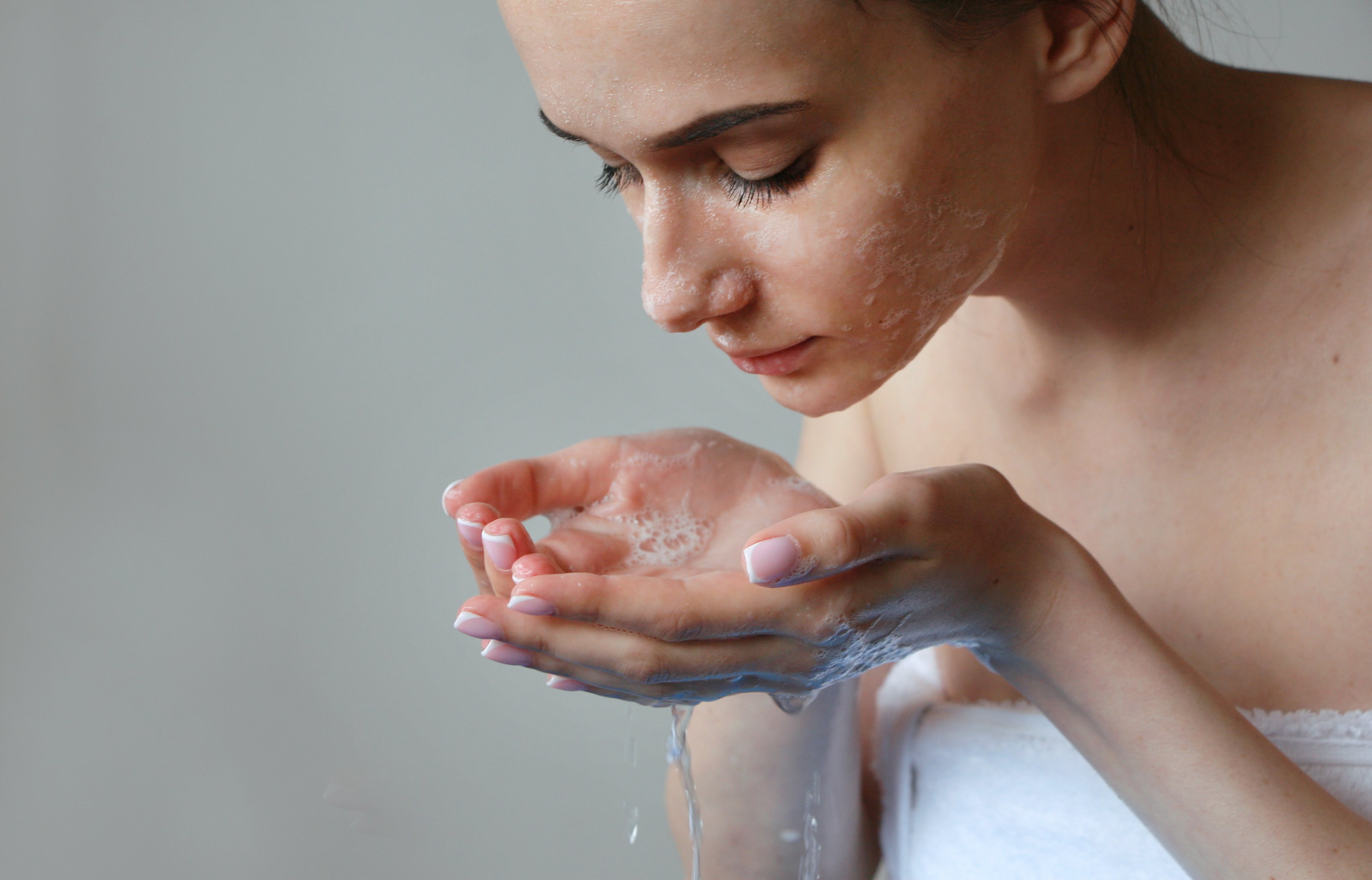
A chemical peel is a cosmetic treatment that makes your skin look and feel better. The aesthetician puts an acid solution on your skin which removes damaged skin cells to reveal a healthier, younger-looking you.
Chemical peels are excellent for treating skin conditions, such as:
Not only do chemical peels treat these conditions, but they also lighten and brighten your skin so you have a radiant complexion.

The name “chemical” might make you think of toxic chemicals, but most peels are actually made of natural fruit acids. People have used fruit acids to exfoliate their skin for thousands of years, according to Skin Inc. Ancient Egyptian women used sour milk (a source of lactic acid) to exfoliate their skin, while Roman women used grape skins (a source of tartaric acid).
Common natural ingredients you’ll find in chemical peels are:
Some chemical peels include synthetic acids that exfoliate deeper into the skin. These products are clinically tested for safety before they are sold to licensed aestheticians.
When you get a chemical peel, the aesthetician will give you pre- and post-peel home care instructions. Following these guidelines will significantly reduce the risk of irritation or negative side effects.
One significant difference between chemical peels is how deeply they penetrate the skin. This is called the peel’s strength level. Lighter peels only affect the outer skin layers, while stronger peels exfoliate deeper into your skin to remove damaged skin cells.
1. Very Superficial
2. Superficial
3. Medium
4. Deep
The results you want determine the strength level you need. If you have a lot of damaged skin cells, you’ll want a stronger peel. Your aesthetician or dermatologist can help you determine what type of chemical peel will help you achieve your skin care goals.

Chemical peels also differ in how they exfoliate your skin.
Products with organic acids work from the inside out. They detach the lower layers of the stratum corneum to exfoliate the outer parts of the skin. Aestheticians call these “timed peels” because they leave them on for a certain amount of time. The longer the time, the deeper the exfoliation.
Peels that contain aromatic or synthetic acids work from the outside in by dissolving the stratum corneum layer-by-layer. These peels give your skin a deeper exfoliation than organic acids. Aestheticians call them “layered peels” because they apply one layer of peel, wait a few minutes, then apply it again. The more layers they apply, the deeper the peel exfoliates.
It’s a peel that uses fruit enzymes (proteins) to exfoliate the skin, giving you a radiant glow. Enzyme peels are perfect for people with sensitive skin as they are much gentler than chemical peels. They are also an excellent alternative for women who are pregnant or nursing since chemical peels are NOT suitable for pregnant or nursing women.
Since enzyme peels are so easy on the skin, you can use them frequently and without any downtime.
When shopping for skin care products, it’s sometimes hard to understand the difference between a chemical peel and an exfoliator, especially since superficial-to-medium peels (including enzyme peels) are also called chemical exfoliants. Confusing, huh?
Exfoliators are scrubs that you rub onto your skin to mechanically remove dead cells, while peels are liquid products that dissolve dead skin cells as they sink into your skin.
When you see the term chemical exfoliant, it’s essentially a lighter peel.
Exfoliator:
Chemical Peel:
Your skin needs exfoliation to stay healthy and prevent dead cells from building up, causing breakouts or discoloration. Add an exfoliator or mild peel 1 – 2 times a week to keep your skin looking healthy and young. You usually don’t need to exfoliate more than that, and over-exfoliating can cause skin damage.

Your aesthetician will go over what to expect from your treatment before applying the peel. Don’t hesitate to ask questions or voice your concerns. Your comfort is a top priority.
When the aesthetician puts the peel on your skin, it’s normal to experience sensations, such as:
How much you feel these sensations will depend on the peel’s strength level. They are not signs that the peel is damaging your skin.
1. Cleanse:
The aesthetician cleanses your skin twice: first to remove dirt, oil and debris, then second to cleanse and prepare your skin for treatment.
2. Pre-Treatment:
The aesthetician applies a pre-treatment solution, which will feel wet and may or may not tingle your skin.
3. Skin Activity:
The aesthetician asks about the amount of activity you feel on your skin to determine your comfort level. You can ask them to adjust the peel strength as needed.
4. Peel Application:
The aesthetician applies the chemical peel and either leaves it on or applies it in layers, depending on the peel. Once the solution has been on your skin long enough, your aesthetician will remove it.
5. Healing:
The aesthetician calms and heals your skin with post-treatment products.
6. Home Care Regimen:
The aesthetician will create a home care regimen for the next 7 – 14 days after your treatment. It is vital that you follow this home care routine if you want the treatment to work. Half of the results come from the clinical treatment but the other half comes from you taking good care of your skin, so follow your post-treatment plan to the tee.
It depends on the chemical peel and the skin condition you are treating. Most light-to-medium chemical peels require at least six treatments over a three-month period to see optimal results.
Ask your aesthetician how many peel treatments they recommended. Remember, your skin will look worse before it gets better, so don’t worry if you don’t see immediate results. Peel treatments are meant to produce gradual improvements over time.

While your aesthetician will tell you how to care for your skin after the peel treatment, here are things you can do to aid in the healing process:
1. Limit sun exposure
2. Continue to do your daily skin care routine
3. Use skin soothing products
4. Do NOT pull dry skin
Keep in mind that not all peels cause your skin to peel (sounds bizarre, we know). Your skin doesn’t need to peel to get results, so don’t worry if you don’t experience peeling.
